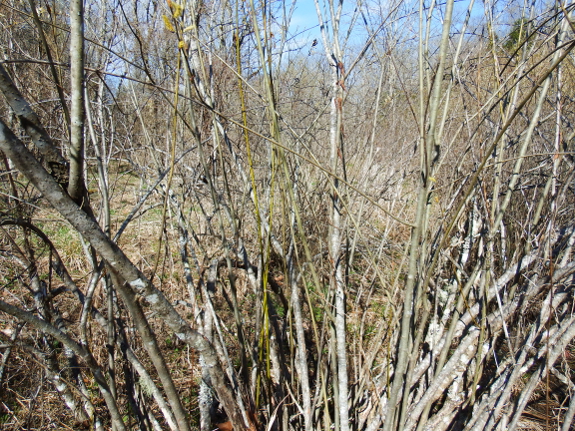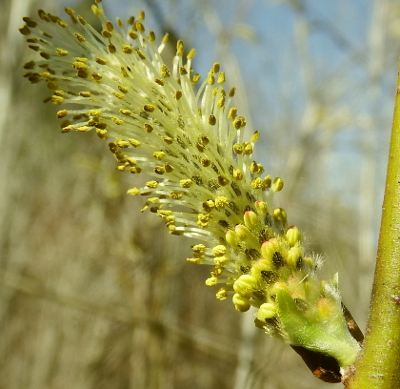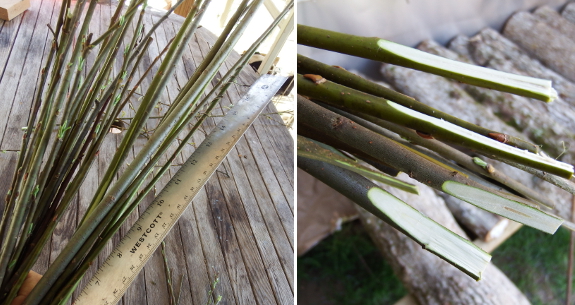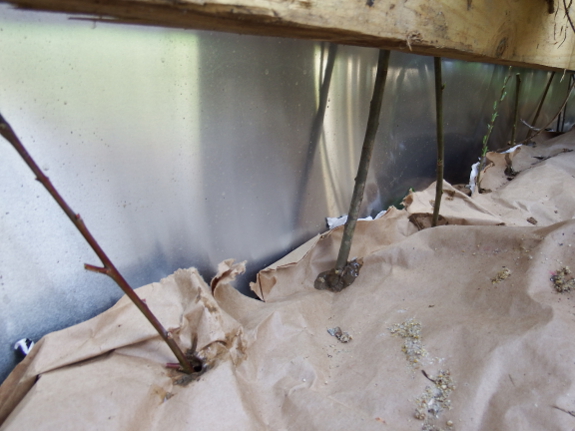
Planting willow cuttings

 I've been holding off on my willow-building experiment because I couldn't quite decide whether our native black willow (Salix nigra)
was too tree-like (eventual height 33 to 98 feet) to keep small in the
format of a living sculpture. Then, while out hunting cattail spears for
lunch, I stumbled across a stand of what are probably planted purple
willows (Salix purpurea) and decided that this smaller (up to 15 feet), introduced species would be easier to keep within bounds.
I've been holding off on my willow-building experiment because I couldn't quite decide whether our native black willow (Salix nigra)
was too tree-like (eventual height 33 to 98 feet) to keep small in the
format of a living sculpture. Then, while out hunting cattail spears for
lunch, I stumbled across a stand of what are probably planted purple
willows (Salix purpurea) and decided that this smaller (up to 15 feet), introduced species would be easier to keep within bounds.

It's good that I found
the willow stand when I did because the bushes were already blooming and
a few leaves were even popping out on the most advanced branches. For
my experiment, I chose young branches, cut off any blooming tops,
snipped the wood down to about eighteen inches, then whittled each base
into a point. Willow cuttings ready to go into the ground!

Back home, I prepared the
ground by laying down chicken-feed bags, cut open, which will act as a
weed barrier. (This is important --- it's hard for even a willow to grow
roots and get established if it has to compete with weeds.) Next, I
used a rebar to punch holes through the paper and about eight inches
into the earth, then I pushed my willow cuttings into the holes.
Now it's time to wait for
the show to begin. In the meantime, I fed the willow tops to the goats,
and Abigail deemed them "highly palatable --- hey, get away from my
willow twigs, Artemesia!" So I guess the eventual prunings are already
spoken for.
Want more in-depth information? Browse through our books.
Or explore more posts by date or by subject.
About us: Anna Hess and Mark Hamilton spent over a decade living self-sufficiently in the mountains of Virginia before moving north to start over from scratch in the foothills of Ohio. They've experimented with permaculture, no-till gardening, trailersteading, home-based microbusinesses and much more, writing about their adventures in both blogs and books.
Want to be notified when new comments are posted on this page? Click on the RSS button after you add a comment to subscribe to the comment feed, or simply check the box beside "email replies to me" while writing your comment.
- Remove comment
